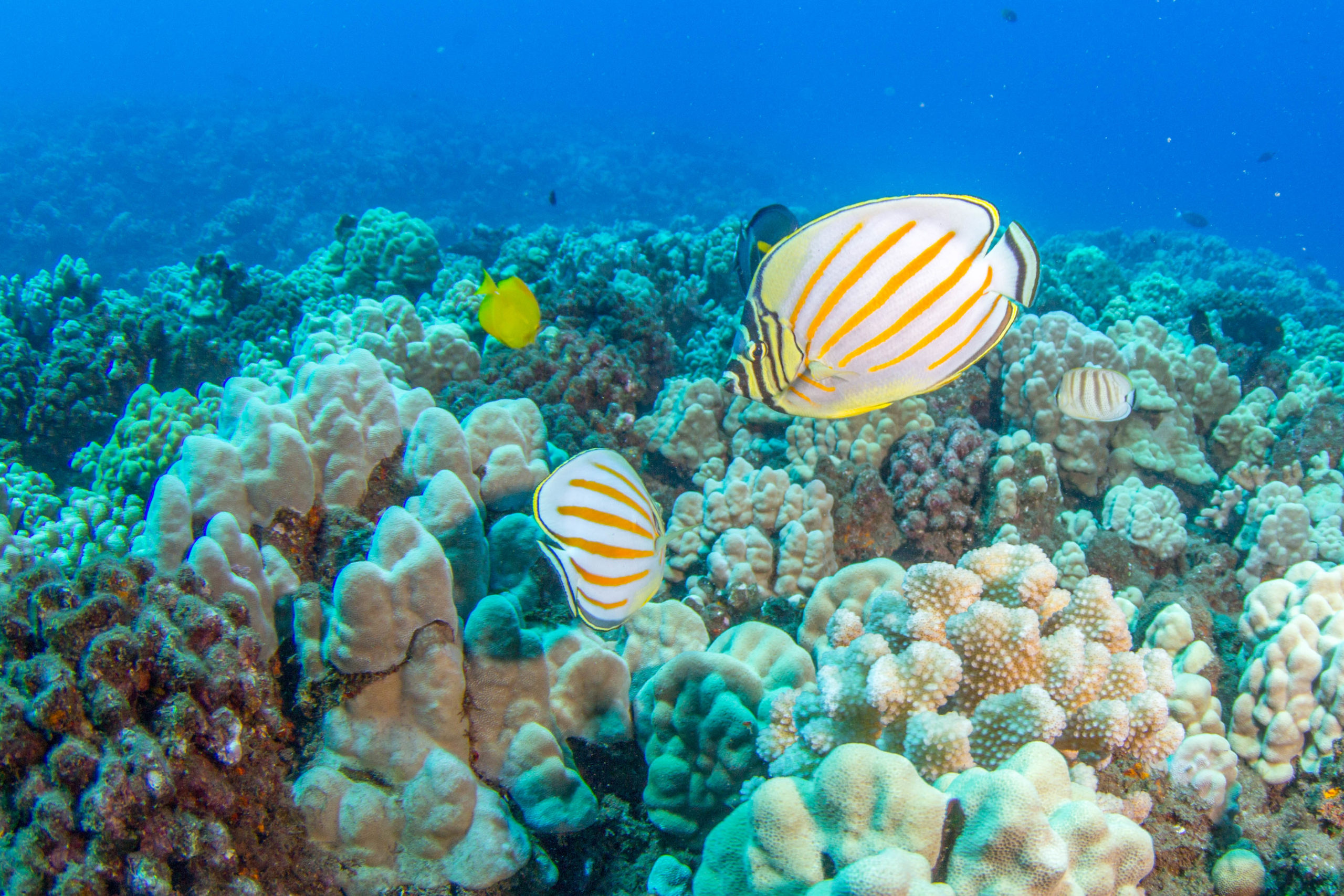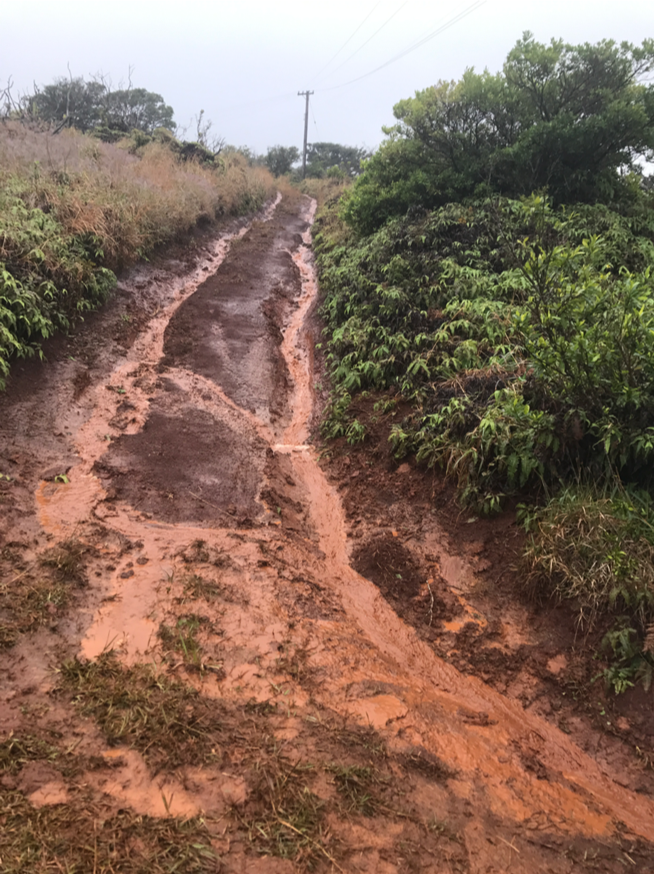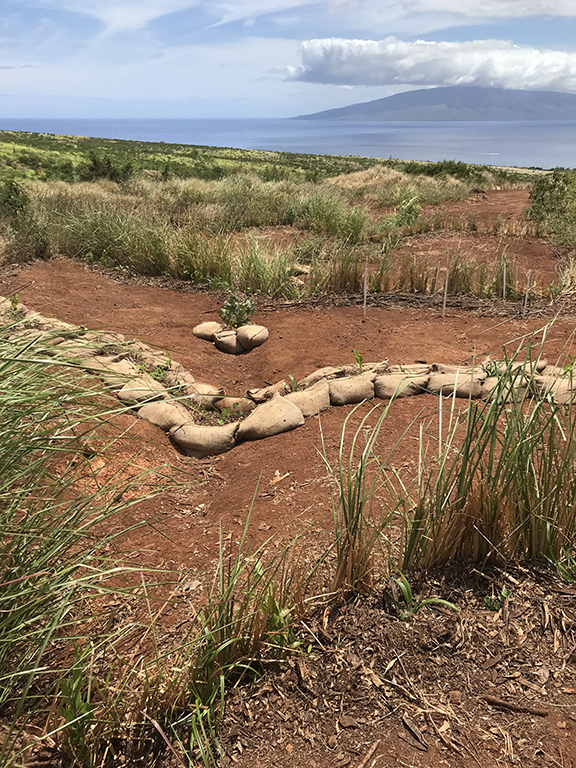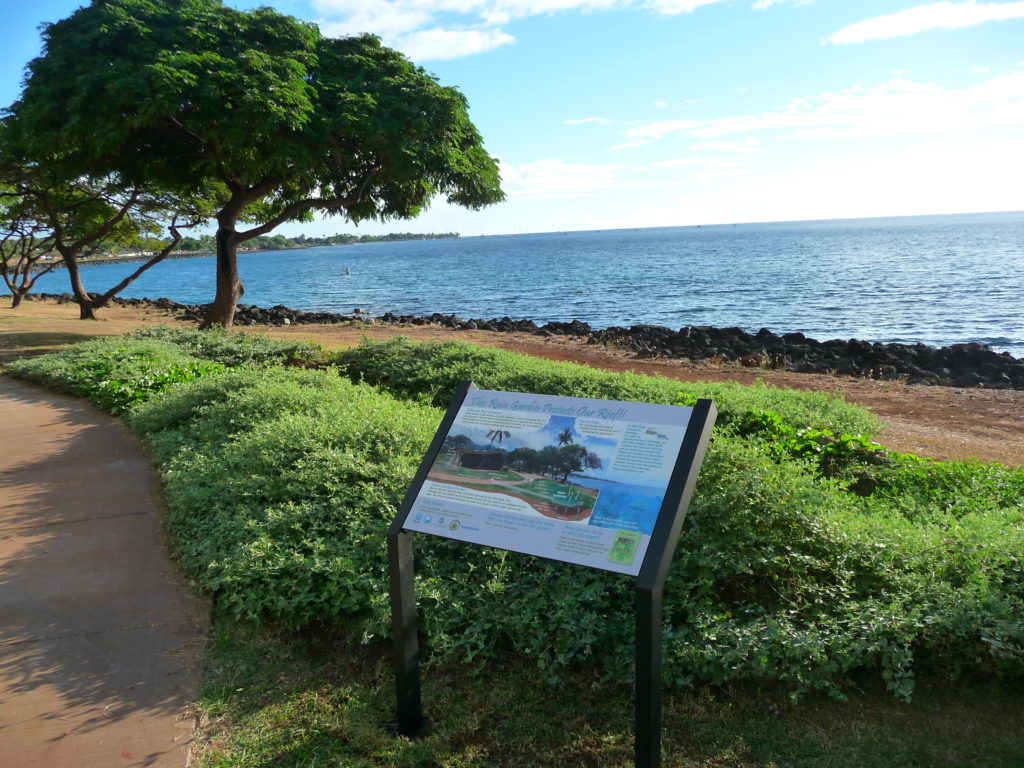In a natural landscape, trees and soil help soak up rainwater, but in developed or urban landscapes, rainwater falls onto streets, parking lots, roofs, or other non-absorbent surfaces like concrete and asphalt. Instead of sinking into the ground, rainwater runs off the land, picking up harmful pollutants like nutrients, pesticides, petroleum residues, and sediments along the way. During heavy rains, the water that runs off the landscape is called stormwater.
Eventually stormwater ends up in our oceans – either by traveling down storm drains or by flowing into waterways like rivers and streams that lead to the ocean. When polluted stormwater flows into the nearshore environment, it causes harm to coral reefs and other marine life. Nutrient pollution enables the overgrowth of algae which can kill corals by smothering them, blocking their access to sunlight and promoting coral disease. High levels of sediment runoff can also kill corals by suffocating them and blocking their access to sunlight.

In Hawaiʻi, stormwater pollution is an island chain-wide problem. Because of our often steep topography and prevalence of altered landscapes (like concrete and deforested agricultural lands), most stormwater follows a quick path straight to the ocean. Large storm events in the islands can transfer so many pollutants into our coastal waters that the Department of Health has to issue “Brown Water Advisories” – warnings to the public that the water is potentially contaminated and poses a health threat to swimmers.
A Brown Water Advisory is being issued for the island of Maui due to recent heavy rains. The public is advised to stay out of flood waters and storm water runoff due to possible overflowing cesspools, sewer manholes, pesticides, animal fecal matter, dead animals, pathogens, chemicals, and associated flood debris. Not all waters may be affected, however, if the water is brown stay out and continue to practice good personal hygiene. Follow up with your primary care physician if you have any health concerns.”
Stormwater in Hawaiʻi not only poses a threat to coral reefs and human health but also negatively impacts the economy by causing a loss in revenue for the tourist industry. It causes a host of other environmental problems like polluting streams and denuding the land of important topsoil needed for agriculture. In West Maui, fallow agricultural lands and the design of dirt roads within these plantations has created easy pathways for sediment to travel to the ocean. Lack of ground cover, the slope of the land, and frequent heavy rains create perfect conditions to transport topsoil with all its contaminants down to coral reefs.

In West Maui, CORAL’s Clean Water for Reefs Initiative focuses on preventing sediment and nutrient pollution from reaching the ocean and degrading reefs. We take a mauka to makai (“ridge to reef”) approach to restore the natural function of a watershed to filter stormwater and absorb nutrients, sediments and other chemicals. We work with farmers, Hawaiian communities, local nonprofits, private businesses, and the government to restore streams, which capture and stabilize sediments and nutrients so that they don’t flow into the ocean.
We are piloting stream restoration techniques that combine modern technology with native vegetation and traditional Hawaiian agricultural practices. For example, we are planting deep-rooted vetiver grasses to help stabilize soil, absorb nutrients and pollutants, increase ground water infiltration, and improve the environment for successful replanting of native vegetation. When vetiver sediment traps are planted within dirt road “kickouts”, they can hold runoff from road segments, detaining water for long enough for sediments to soak into the soil, rather than flow into streams. These actions not only restore streams and prevent pollutants from entering the ocean, but they also lead to a whole host of benefits like restoring ecosystem services, improving habitat for species, and creating recreational opportunities for communities.

If you live on Maui and are interested in playing a role in this important work, we’d love your participation in our next planting day on October 13th from 8:00am-12:00pm. You can help plant native plants, create sand bag corridors, and take part in other fun stream restoration activities! For more details, email Annalea Fink at [email protected].
You can also help reduce stormwater pollution and safeguard coral reefs year-round by reducing pesticide and chemical use in your yard, and/or by implementing low impact design (LID) solutions like building a rain garden or installing pervious pavement options in your home or workplace.

CORAL would like to thank the generous funders of our West Maui watershed restoration program during 2018: Bently Foundation, Hawaiʻi Community Foundation, Hawaiʻi Tourism Authority, The Keith Campbell Foundation, NOAA Coastal Ecosystem Resilience, NOAA Coral Reef Conservation Program
